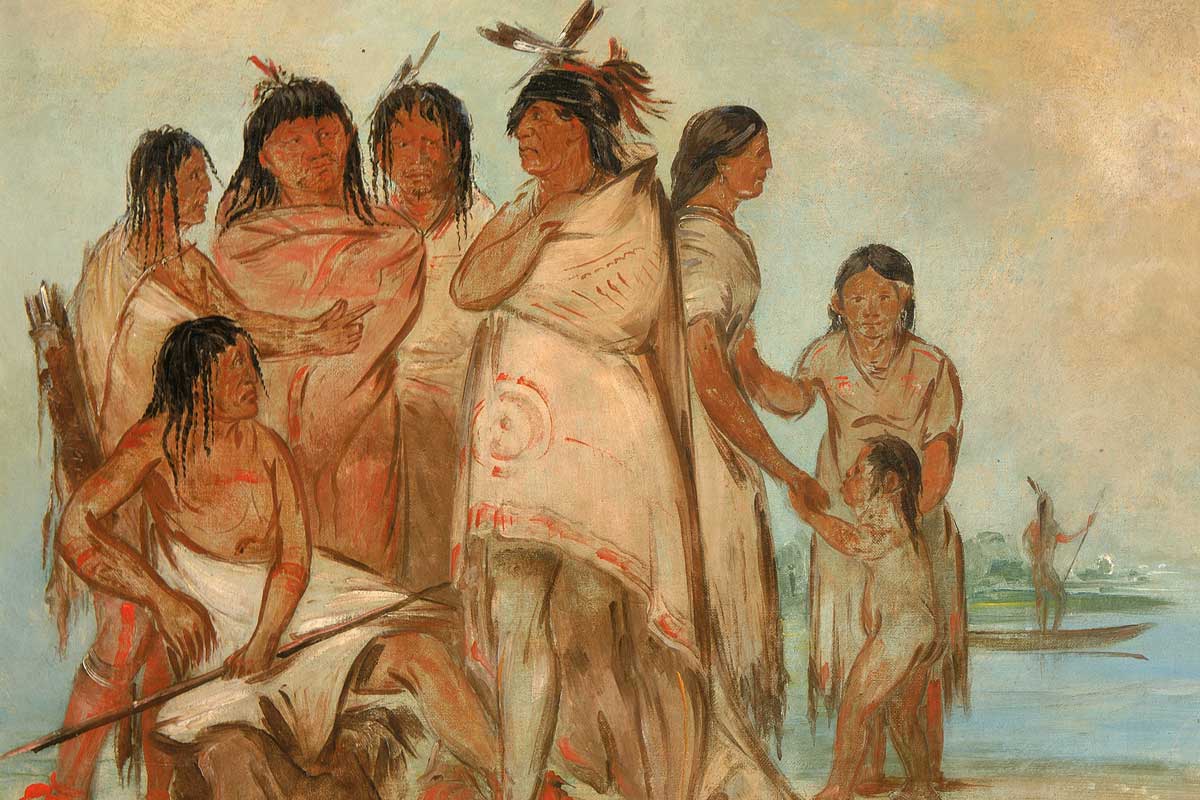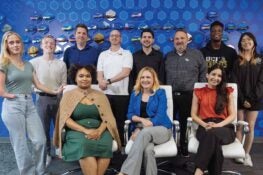Class name
AMH 3580 – North American Indians
Instructor
Associate Professor Daniel Murphree
When is it offered?
Occasional
How many students in a class?
35
Prerequisites
AMH 2010 and AMH 2020
From the Professor
Describe this class in 10 words or fewer.
Looking at U.S. history through native eyes.
What do you hope students learn by the end of the course?
If you think about it, there’s no population group that has had more experience with the United States than native peoples. Learning about the role played by Native Americans in events such as World War II, the U.S. Civil War or the Great Depression provides a different perspective for understanding the nation’s past. In addition, exposure to native viewpoints gives students more context for interpreting their current worlds.
Native American, North American Indian, indigenous people — is one of these terms more appropriate than the other?
I’ve been teaching this course for 15 years and every time I teach it, the first thing I do is talk about that. There are different perspectives on it. My approach is to use them interchangeably. Native American, North American Indian, indigenous people — none of those terms are precisely accurate. A lot of the terminology we use for natives, like the Sioux Indians, are also not accurate in that they were imposed on the people by European colonizers. So I say to people who insist on one term over the other, there’s no real reason to insist on an inaccurate term. But if we’re talking about a specific group, for example the Seminole Indians or Timucua Indians, it is preferred to use that terminology.
How many tribes were/are in Florida?
When people think about Florida Indians, they almost always think about Seminoles. But the term Seminoles didn’t exist until the 18th century about the time of the American Revolution.
Before the Seminoles existed there were dozens of indigenous groups that inhabited the peninsula. The Calusas lived in South Florida. The Apalachees lived in the Panhandle region. The Timucuans were the group that lived where UCF is today, or if they didn’t live here, they definitely traveled through here. All of these tribes were largely depopulated through disease, warfare and enslavement by the time of the American Revolution. The Seminoles emerged in their place. Comprised of survivors from the earlier populations and Indians migrating south from what is today Alabama and Georgia, these diverse peoples united for protection and trade purposes, eventually becoming the Seminoles of Florida we know today.
Americans are generally first taught about native peoples in the context of the first Thanksgiving. What do you wish people better understood about the exchange?
I would want people to know that relationships between natives and Europeans can’t just be characterized by that first Thanksgiving. There was a lot of interaction before and after that was both negative and positive. We can debate the dates and timing, but the first Thanksgiving didn’t actually happen with the Pilgrims and Indians in New England. It happened here in Florida in 1565. The story of the first Thanksgiving is always that the natives and colonists came together, broke bread and gave thanks for the bounty they had. It indicates there was a meeting of harmony. Well, the Spanish were here a lot earlier than the Pilgrims. They were having Thanksgiving type feasts and meetings in St. Augustine with local Indians. The same could probably be said for settlers and Indians in New Mexico and other locales as well.
I think that should make us have a different idea of this Thanksgiving story. If you look at it from the perspective that there were multiple Thanksgivings, it gives you this idea that these interactions were taking place from Christopher Columbus onward. Thanksgiving shouldn’t make us forget about the warfare, the violence, the seizure of lands, but we also shouldn’t just focus on those things either. It was a fluid situation. Just like people today, native peoples got along with settlers sometimes, sometimes they did not.
How are Native Americans and their culture/history embedded in our lives and society today?
There are things going on in our contemporary world that have direct connections to native people. You may be familiar with the construction of the Dakota Access Pipeline, which affected sacred lands claimed by the native peoples. Native American protests proved significant in impeding this construction and demonstrating that the people who are considered to be the original environmentalists in this country are still around. You can also look at what just happened with the Washington Football Team, which recently abandoned its name and logo, the Redskins, amidst growing public for a change. That would have never happened without Native American advocacy.
In terms of literature, movies, music and culture, Native Americans have had an increasing presence over time that’s more visible than it’s ever been. If you’re a foodie, Sean Sherman (Oglala, Lakota, Sioux) is a famous chef that is increasingly on Food Network. He’s promoting a Native American diet from 100 years ago to infuse our diets today.
Take a ride down an interstate for an hour and anywhere in the country you’re going to encounter Native Americans in the names of rivers, cities, things like that. They aren’t invisible. They are here. You just don’t realize it in your day-to-day life.
From the Student
Joseph Kaminski ’19, Burnett Honors Scholar with bachelor’s degree in history who is now a graduate student at UCF
Why did you enroll in this course?
Honestly, Dr. Murphree. The first class I took at UCF was professionalizing history majors (HIS 3600), and I really felt like Dr. Murphree’s style of teaching in both classes helped keep people on track [in pursuing their degree]. I took this course in the spring of 2018, and I’m glad I took it because it’s one of the better courses I had within the degree program.
What do you remember as being the most enjoyable aspect?
It’s hard to describe it as enjoyable because the subject matter is not necessarily an enjoyable topic. But seeing another perspective that isn’t in most history books is the most enjoyable part of the course.
Dr. Murphree is a wealth of information in terms of Native American history. If I hadn’t taken that course I don’t think I’d be where I’m at [teaching history at Colonial High School and in graduate school].
Why would you encourage a student to enroll in the course?
Now more than ever there is a lot of tension in America. I feel like if you’re going to focus on issues in America, you can’t focus on one group of people’s issues. To understand struggle is to look at all struggle.





